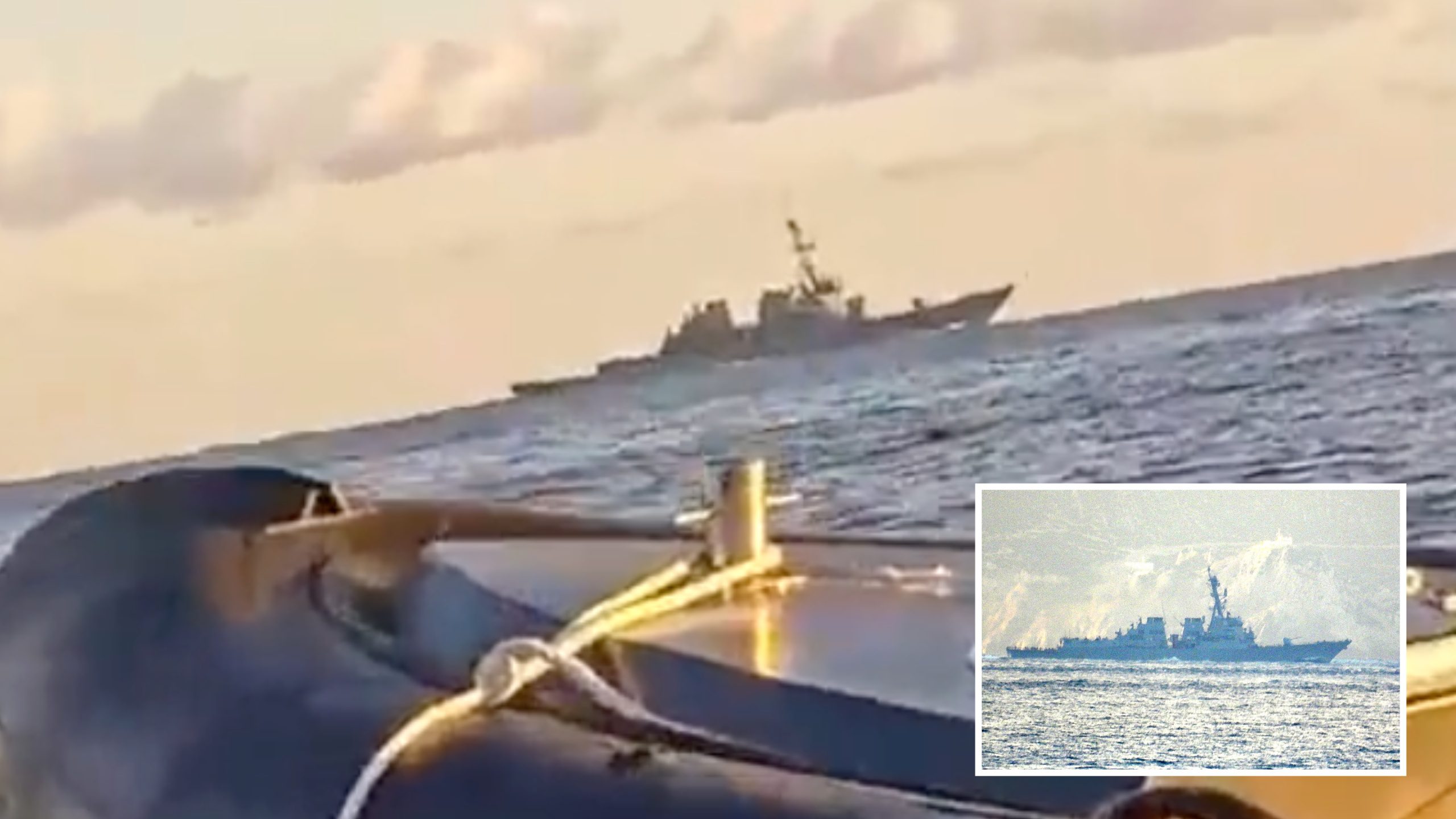DRUG traffickers in the Strait of Gibraltar have become so brazen that they have filmed themselves relaxing at sea as an enormous US warship sails past.
The video, posted to social media by the narcos themselves, shows the Arleigh Burke-class destroyer the USS Oscar Austin cruising eastbound towards the Mediterranean at dusk on Thursday.
It is clearly taken from a pair of notorious narco-launch speed boats that regularly wait out at sea to ferry enormous quantities of drugs into Spain.
A similar video posted in August showed the impunity the narcos feel as a number of launches fluttered around the Spanish navy vessel Patrullero Atalaya.

The recent announcement that another drug trafficking gang that uses the 300-horsepower speed boats to bring drugs into Huelva has been dismantled has been hailed as a success.
Among the 12 arrested was a local businessman who had been trafficking drugs since 2017 and using his companies to launder the profits, as well as 1.6 tonnes of pure, uncut cocaine.
But despite the constant arrests and crackdowns on the narco traffickers, the Strait of Gibraltar remains clogged with narco speed boats.
READ MORE: Pictured: Narco drones used by ex-military gang to fly drugs from Morocco to southern Spain
It is hoped that an upcoming European summit on organised crime to be held in Cadiz will galvanise neighbouring countries to see the region as ‘the first shield against drug trafficking’ in Europe.
Francisco Mena, the president of the anti-drug coordinator Alternativas del Campo de Gibraltar, said that 90% of the hash entering the province is destined for European markets.

He praised the ‘good work done by Spain’s State Security Forces where the fight against drugs is not carried out exclusively with our territory in mind, but with all of Europe.’
The fourth summit of the Coalition against Organized Crime will bring together the heads of the Interior and Justice departments of countries such as Spain, Germany, France and Italy.
It is hoped that these chiefs will come to understand the shield that Cadiz provides them against the scourge of organised crime and strengthen their cooperation in the fight against drug trafficking and organised crime.
It comes as Pedro Fernandez, the Spanish Government Delegate in Andalucia, warned that more and more young people are being drawn into the highly-organised drug trafficking networks that operate in the region.
“We are seeing individuals increasingly younger joining these criminal structures,” Fernández told regional security chiefs.
“We must eliminate the social foundation that normalises these criminal activities.”
Drug trafficking gangs are becoming more sophisticated, employing increasingly complex systems and introducing legal activities to mask their criminal operations, he said.
The geographical focus has also shifted, Fernandez noted, with criminal activities moving away from the Campo de Gibraltar.
Now, they concentrate in eastern and western parts of Andalucia, including Almería, Huelva, and along the Guadalquivir River.
The statistics underscore the severity of the problem facing southern Spain.
Since August 2018, law enforcement has made substantial inroads against these networks, arresting 28,445 people and seizing 2,344 tonnes of drugs – including significant quantities of hashish, cocaine, and marijuana – alongside over 2,300 weapons.
The region’s Special Security Plan aims for a comprehensive approach to dismantling drug trafficking networks by combining police action with social measures to provide viable alternatives for local populations, thereby reducing the allure of drug-related activities, according to Fernandez.
However, he warned of escalating challenges.
Narco gangs are increasingly using sophisticated methods, such as offering specialised services like distribution, transportation, packaging, and money laundering.
Violence and aggression have intensified, while legal activities are being used to conceal illicit operations.
This year, the government is investing €37 million into the Campo de Gibraltar’s Special Security Plan, with €17.5 million dedicated to staffing and €19.5 million for technical resources and intelligence.
International cooperation is also ramping up, with Spanish law enforcement increasingly integrated into European and global anti-drug intelligence networks.








